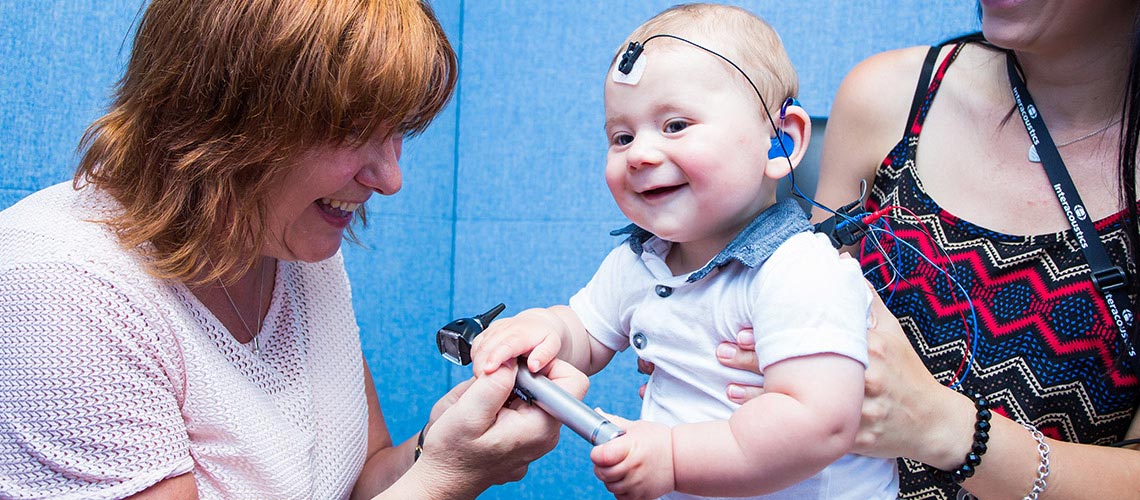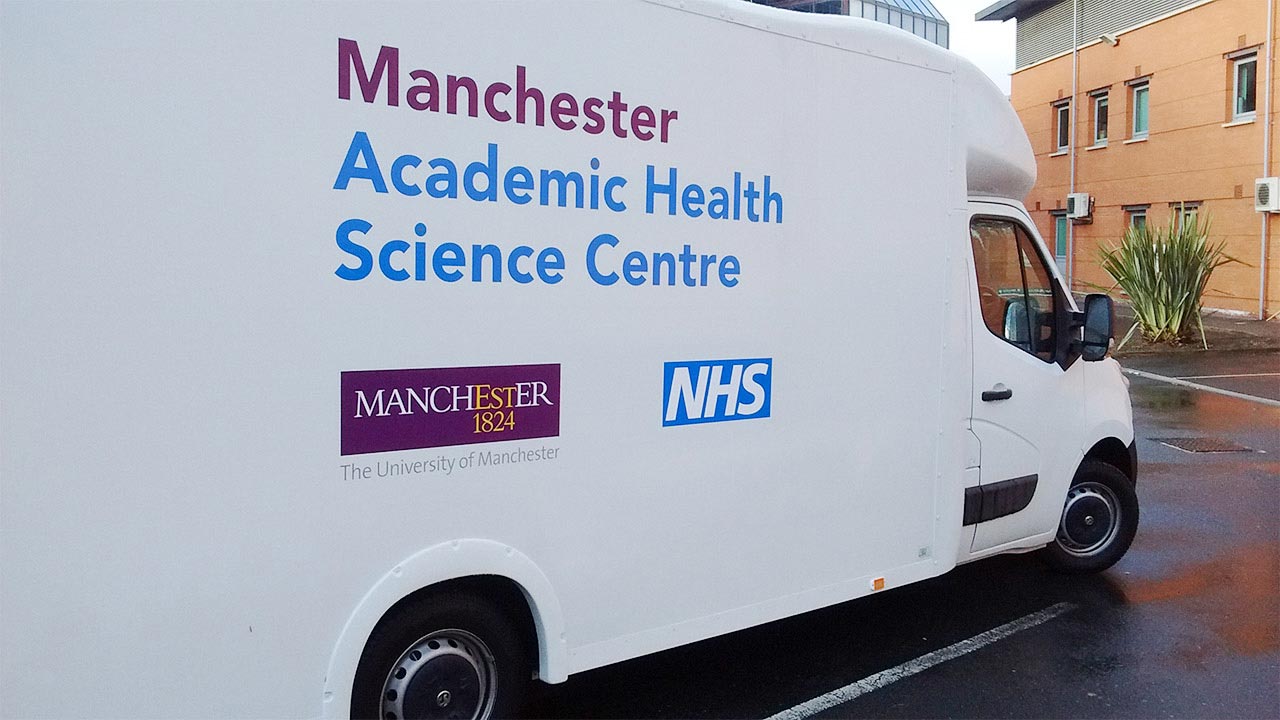The ladies in the van
Permanent hearing loss affects approximately one in a thousand babies in the UK. Audiology researchers from Manchester are taking a unique approach to discover the most effective tests to help these children and their families.

For babies who are born with permanent hearing loss, hearing aids are fitted within the first three months of their life. However, parents have to wait until their child is developmentally ready for the next hearing test to find out just how much of an impact the hearing aid is having, and this can often result in months of waiting.
Since 2016, Professor Kevin Munro, Dr Michael Stone and the audiology research team at The University of Manchester has been running a large-scale study across Britain investigating the tests used for children with hearing aids – and they’ve been doing it all from a Luton van!
“The hope is that with enough information and normative data, the results could be used to help audiologists to ensure that babies with hearing loss are getting the most out of their hearing aids, provide parental reassurance as to the benefit of hearing aids, and inform clinicians when alternative strategies may be required,” said Caroline Hudson, a research audiologist who joined the team in 2018.
“All this at an earlier age can only be beneficial to the babies seen in audiology clinics across the UK.”
Bridging the gap
The main issue concerning the travelling team, which includes Dr Anisa Visram, Jo Brooks and Caroline Hudson (collectively known as the ladies in the van research group), is the large and varied gap between hearing tests.
Babies are referred to audiology departments if they do not pass their newborn hearing screening. Paediatric audiologists measure and diagnose hearing loss in babies under the age of three months by performing a test, which measures how the baby’s brain responds to different levels and pitches of sound.
The responses obtained help predict hearing levels and hearing aids can be prescribed using the results.Once the baby is developmentally ready, a behavioural test can be used to determine hearing levels, but it is often not possible until seven to twelve months - or even later in some cases. This test involves the baby turning to sounds they have heard and being rewarded for doing so.
Currently, there is no standard test to determine whether a baby is able to hear speech sounds with their hearing aids before they are able to respond to the behavioural test. This often causes anxiety for parents in what is a crucial developmental period for every child.
“At present, parental evaluation and questionnaires are used in clinic to evaluate hearing aid performance,” Caroline said.
“These can be ambiguous because babies of this age often show no behavioural evidence that the hearing aids are beneficial and can often result in parents putting a stop to hearing aid usage.”
So, how are the team bridging the gap?
Firstly, they’ve developed a new test which is to be performed whilst a baby is wearing their hearing aids. The cortical auditory evoked potential (CAEP) test measures how the baby’s brain responds to different speech sounds.
The baby does not have to actively respond to the sound, which is why it could be suitable for this particular age range. The CAEP test is currently used in Australia, where much of the previous research has taken place, but has not yet been taken up as a standardised test in the UK.

“We’ve been as far north as Glasgow and as far south as Cornwall. To date we’ve collected data for 103 babies and we are continuing to recruit until March 2020.”
Hitting the road
Secondly, instead of waiting for parents to approach them, the team have taken to the road in a specially converted van which works as a mobile audiology unit in order to visit the homes of infants with hearing problems.
“The mobile research unit has allowed us to reach many more families in areas away from Manchester,” said Caroline.
“We’ve been as far north as Glasgow and as far south as Cornwall. To date we’ve collected data for 103 babies and we are continuing to recruit until March 2020.”
The sessions involve two appointments, one when the baby is three to seven months and one when the baby is ready for the behavioural test (often between nine and eleven months).
“During the first appointment the CAEP test will be performed and during the second the standard behavioural test will be performed”, Caroline explained.
“The behavioural test will allow us to determine whether or not the baby could hear the speech sounds using their hearing aids in the first CAEP test, and determine what the responses look like in cases where the sounds were or were not heard.”
NHS Trusts across Britain are identifying babies for the study, and the National Institute for Health Research (NIHR), the Marston Family Foundation and the Oticon Foundation have all provided funding.
So far, the feedback has been overwhelmingly positive from the families who have taken part in the study.
One parent said that the testers were “very friendly, gave great explanations in advance and made me feel at ease” whilst another added that they “would like to thank everyone who is conducting this research and helping children like mine.”
Next steps
Caroline and the team aren’t just satisfied with going through the motions for the next year of the study though. Instead they’ve developed another test, one which will take over from CAEP in the coming months.
The new auditory steady state response (ASSR) test will provide a different measure of how well young babies are hearing, which may have some advantages over the CAEP test.
Dr Anisa Visram, Lead Research Audiologist explained: “The CAEP test measures baby’s responses to very short duration sounds – less than one tenth of a second – whereas the ASSR uses a continuous sound which is far more speech-like in nature.“
“This means we are getting closer to measuring what we are really interested in; how well the babies are hearing the speech sounds that will help them to develop their own speech and language skills.”
“Another advantage of the ASSR is that it works well whether the babies are asleep or awake – which is a real boon for testing babies at such a young age. The CAEP test works best when babies are awake, and it’s not always easy to keep them quiet and alert for the test duration”, said Anisa.
Ultimately, the aim is that following the end of the study, the team will be able to analyse the data obtained from both approaches and determine which test is most appropriate.
The hard work is set to continue with another year left on the road, but with the strides that the audiology research team are making, there are plenty of reasons to feel optimistic about the future for babies who are born with permanent hearing loss.
Follow the journey of the ladies in the van on their Facebook page and on Twitter.
